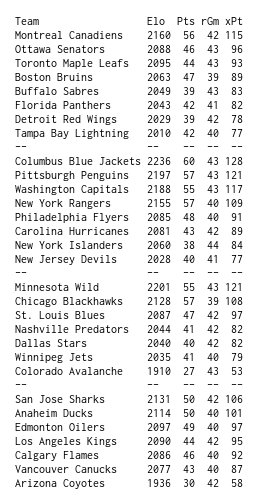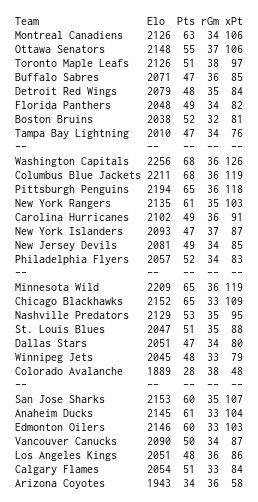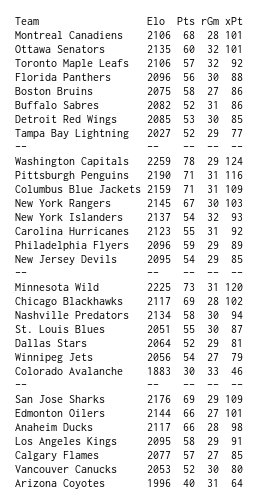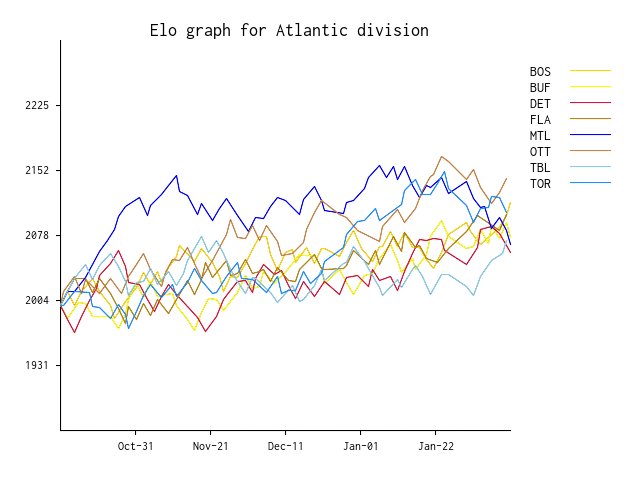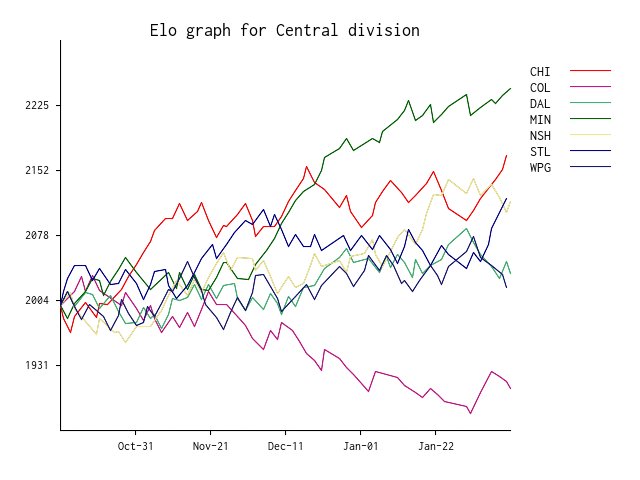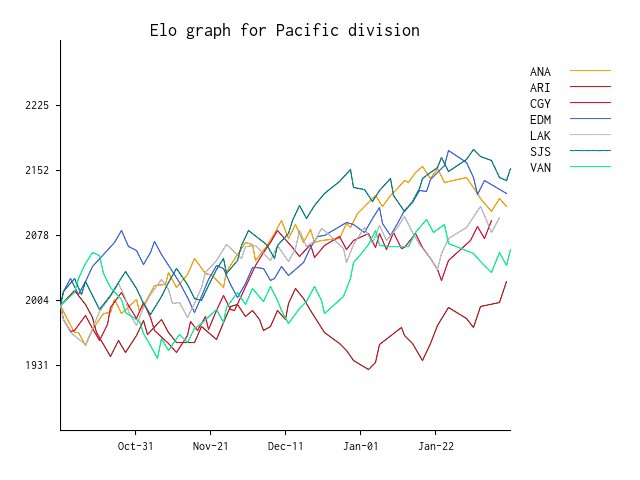- Nov 17, 2011
- 7,652
- 2,521
Thanks for the questions.
The estimate of how the team would finish comes from the sum of current points and the number of projected remaining points. This latter one is a function of the remaining schedule strength, but also of the number of the remaining games to play.
Also a streaking up team may surpass a streaking down team, or even a level team, in Elo before overtaking it in points.
Regarding the OT and the SO:
1) I treat shootout loss as a 'draw', or score of 0.5 pts (because Elo functions work with 0-1 scale), to compare with expected score. Therefore the ratings tend to inflate over season, unlike in chess where the average stays the same. However since I reset the team ratings to 2000 at the start of the season, the inflation is not important - and the Elo itself only cares about difference between ratings, not their actual values.
2) I calculate the share (P) of game ending in OT/SO and it affects the expectation - the expectation is multiplied by P/2 for ALL teams.
I don't use GD.
Thank you for the response. I looked through your site a little, and I am not a statistician. So, can you answer again and tell me how a team's ELO changes after each game? For example, Right now, CMB are at 2250, MIN are at 2196. They play tomorrow. If Minnesota wins, how do you calculate the new rankings?
Also, are you familiar with the Bradley-Terry method?


